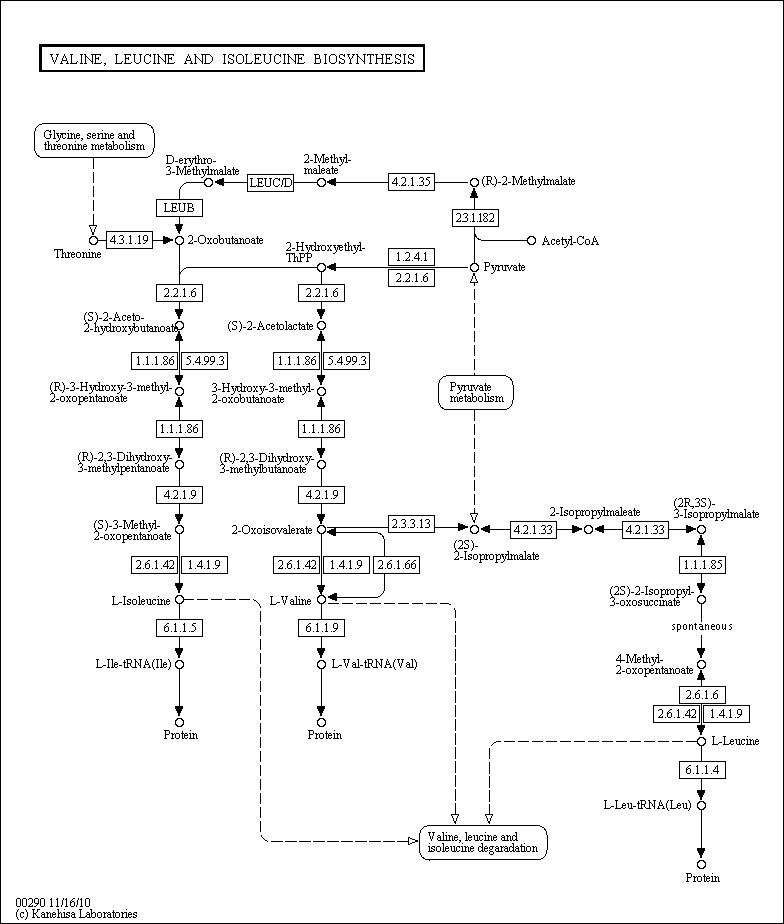Valine, Leucine and Isoleucine Biosynthesis
Description: The synthesis of valine and leucine have similar beginnings to their pathways. It starts with pyruvate, which is created from glycolysis, and through several steps pyruvate is converted to 2-keto-isovalerate. The next step(s) are where the two differ. For valine, the 2-keto-isovalerate is reacted with gluatmate right away to form the amino acid. For leucine, 2-keto-isovalerate is converted to alpha-ketoisocaproate in three steps and then that molecule is reacted with glutamate to form the amino acid.
The synthesis of isoleucine takes a completely different path than the other two. It begins with threonine, which in four steps, is converted to 2-keto-3-methyl-valerate. From there, glutamate is added to form isoleucine.

Related BMRB Molecules
- Citraconic-Acid
- R-Citramalic-acid
- L-Isoleucine
- 2-Isopropylmalic Acid
- 2-Ketobutyric-Acid
- L-Leucine
- Methyl-oxobutanoic-acid
- 4-Methyl-2-oxovaleric-acid
- Pyruvic Acid
- L-Threonine
For complete information about pathway, see KEGG [map00290]
